Gangtok, the vibrant capital of Sikkim, is nestled at 1,437 meters in the Shivalik Hills of the Eastern Himalayas. Established in 1840 as a Buddhist pilgrimage center, it’s now a major tourist destination known for its mesmerizing landscapes, cultural landmarks, and spiritual significance. From snow-capped mountains to serene monasteries, Gangtok offers a perfect blend of adventure, heritage, and relaxation.
Quick Overview of Gangtok
| Category | Details |
| State | Sikkim |
| Altitude | 1,437 meters |
| Famous For | Adventure, Heritage, Mountains, Food, Culture |
| Best Time to Visit | March to June (for summer), September to November (for autumn) |
| Nearest Airport | Bagdogra Airport, West Bengal (124 km) |
| Nearest Railway Station | New Jalpaiguri, Siliguri (148 km) |
| Major Attractions | Tsomgo Lake, Nathu La Pass, Do Drul Chorten, Rumtek Monastery |
Explore the Top Winter Destinations in India for 2024-25 – Your Adventure Awaits!
Best Time to Visit Gangtok
The ideal time to visit Gangtok is from March to June when the temperature remains mild and perfect for sightseeing. The monsoon season (June to September) often results in heavy rainfall, which can hamper travel plans, but autumn (September to November) offers clear skies and spectacular views of the Himalayas, making it another favorable period.
How to Reach Gangtok
By Air: The nearest airport is Bagdogra Airport in West Bengal, 124 km from Gangtok. You can take a cab to reach the city.
By Rail: The closest railway station is New Jalpaiguri (148 km). It is well connected to major cities like Kolkata and Delhi.
By Road: Shared cabs and private taxis are available from nearby towns like Siliguri and Kalimpong.
Top 5 Places to Visit in Gangtok
Tsomgo Lake
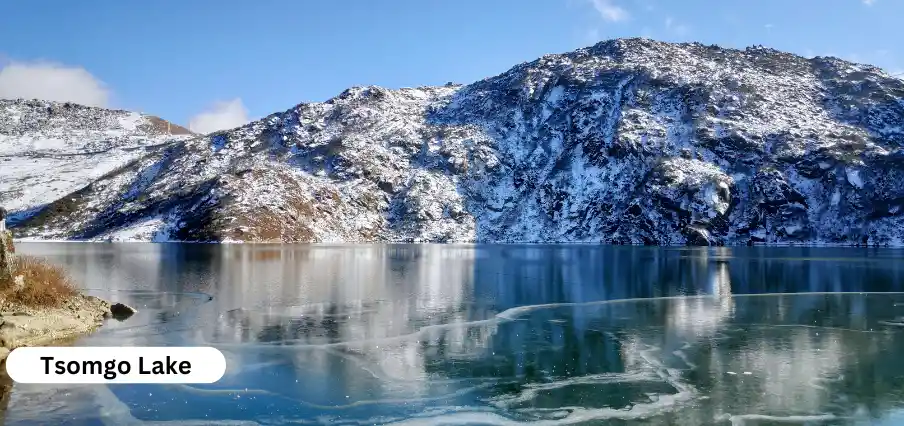
Tsomgo Lake, also known as Changu Lake, is one of the most beautiful and significant tourist attractions in Gangtok. Situated at an altitude of 3,753 meters, it is a glacial lake that mesmerizes visitors with its crystal-clear waters and snow-capped surroundings. The lake is sacred to the local people and is associated with various myths and legends. In winter, the lake freezes completely, offering a breathtaking view, while in summer, the surrounding meadows bloom with colorful flowers, making it a visual treat.
The lake is home to a variety of alpine flora and fauna, including Brahminy ducks, yaks, and migratory birds, making it a hotspot for nature lovers. A Shiva Temple on the shores of the lake adds a spiritual aspect to this already stunning landscape. Tsomgo Lake is also a great spot for yak rides, which adds a bit of adventure to the experience.
Access to Tsomgo Lake requires a permit, as it is located near the Indo-China border. The winding journey to the lake offers panoramic views of the mountains, making the trip as exciting as the destination itself. Whether you are a nature enthusiast, a photographer, or a spiritual seeker, Tsomgo Lake provides a tranquil and awe-inspiring experience.
Nathu La Pass
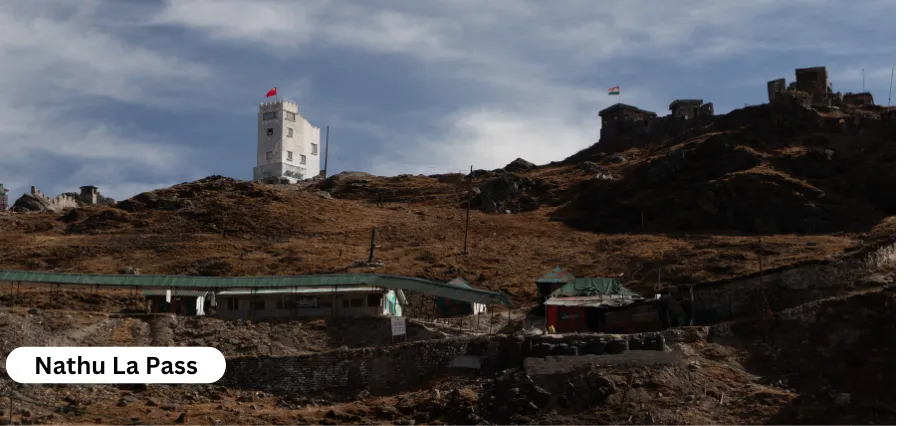
At an elevation of 4,310 meters, Nathu La Pass is one of the most iconic landmarks in Sikkim. Historically significant as a part of the ancient Silk Route, Nathu La connects India with Tibet and remains one of the three open trading border posts between the two countries. For tourists, the pass offers breathtaking views of the Eastern Himalayas, with its towering peaks and deep valleys covered in snow.
Visiting Nathu La Pass is an adventure in itself, with winding roads taking you through some of the most rugged yet beautiful terrains in the region. The pass is open to Indian tourists on select days, and visitors require special permits to access this high-altitude frontier. Once you reach the top, the views of the surrounding mountains and valleys are simply unmatched.
Apart from its scenic beauty, Nathu La also holds historical significance. You can see the Indo-China border from here, and the war memorial dedicated to the Indian soldiers who lost their lives in the 1962 Sino-Indian War is a poignant reminder of the past. It’s a place where history, adventure, and nature come together in a powerful way.
Do Drul Chorten
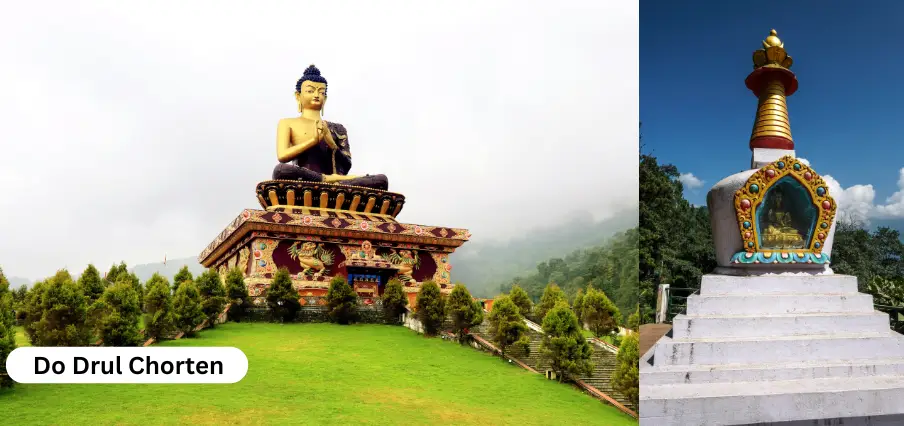
Do Drul Chorten, located in the heart of Gangtok, is one of the most significant Buddhist stupas in Sikkim. Built in 1945 by the Venerable Trulshik Rinpoche, it is a center of spiritual importance and draws pilgrims and tourists alike. The stupa houses sacred relics, including the complete set of Dorjee Phurba, Kangyur (holy Buddhist texts), and other religious artifacts. Surrounding the stupa are 108 prayer wheels, which visitors can turn while chanting mantras for spiritual merit.
The tranquil atmosphere of Do Drul Chorten provides a peaceful retreat from the hustle and bustle of the city. The nearby Namgyal Institute of Tibetology further enhances the spiritual experience, offering insight into Tibetan Buddhism through its museum and library.
Whether you’re a devout pilgrim or a curious traveler, visiting Do Drul Chorten offers a chance to experience the rich spiritual heritage of Sikkim. The serene environment, coupled with the significance of the site, makes it one of the top places to visit in Gangtok.
Rumtek Monastery
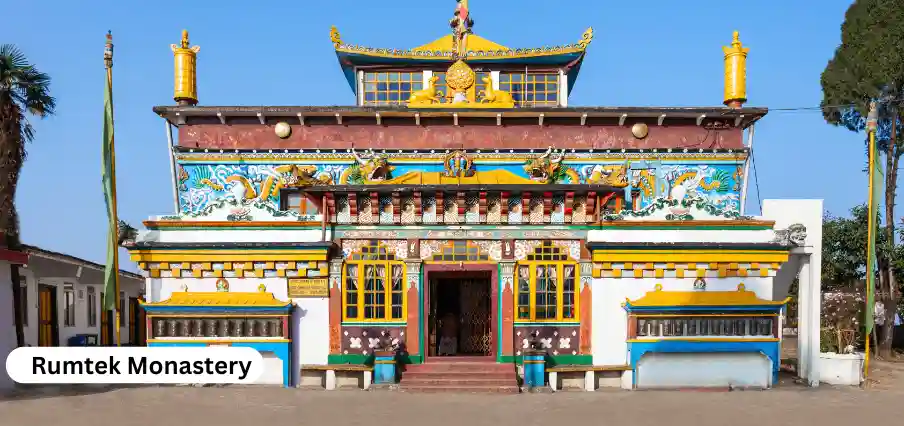
Rumtek Monastery, located 24 km from Gangtok, is one of the largest and most important monasteries in Sikkim. It is the seat of the Karma Kagyu lineage of Tibetan Buddhism and is known for its magnificent architecture, spiritual ambiance, and historical significance. Originally built in the 16th century, the monastery was rebuilt in the 1960s and has since become a hub for Buddhist culture and practice.
The monastery is a striking example of traditional Tibetan architecture, with its ornate interiors, golden statues, and vibrant murals. Visitors are drawn to its peaceful surroundings and spiritual energy. Every year, Rumtek hosts several important Buddhist festivals, drawing monks and devotees from across the world.
A visit to Rumtek Monastery offers not just a glimpse into Buddhist traditions but also panoramic views of Gangtok and the surrounding hills. The monastery complex also includes a Dharma Chakra Centre, where monks practice the teachings of the Kagyu lineage.
Ganesh Tok
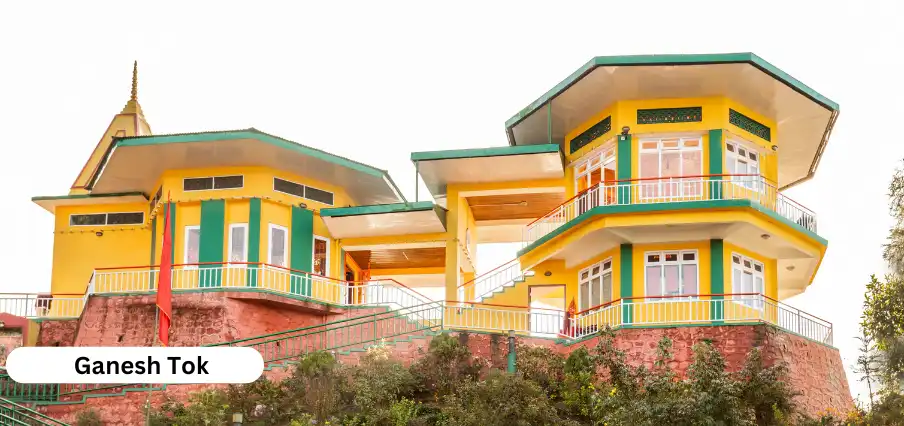
Ganesh Tok is a small temple dedicated to Lord Ganesha, perched on a hilltop at 6,500 feet. What makes Ganesh Tok a popular tourist destination is not just its religious significance but also the spectacular views it offers. From the temple’s viewpoint, you can enjoy panoramic vistas of Gangtok town, the surrounding valleys, and the snow-capped peaks of the Kanchenjunga range.
The temple is also a great place to experience the local culture and spirituality, as many visitors come here to offer prayers and seek blessings. The peaceful ambiance and scenic beauty make Ganesh Tok a perfect stop for photographers and nature lovers alike.
Top Restaurants in Gangtok
- The Coffee Shop: A cozy café known for its wide range of coffees, teas, and snacks.
- Osm Restro & Lounge: Offers a fine dining experience with a mix of local and multi-cuisine dishes.
- Café Live Loud: Popular for live music and a lively atmosphere, perfect for evening hangouts.
Best Places to Stay in Gangtok
- Ramada by Wyndham: Known for its luxury, mountain views, and modern amenities.
- Mayfair Spa Resort & Casino: Offers a perfect blend of relaxation and entertainment with a spa and casino.
- Tashiling Residency Hotel and Spa: Known for its spacious rooms and high-end facilities.
Food to Try in Gangtok
Gangtok is known for its diverse food culture, blending Tibetan, Nepalese, and local Sikkimese flavors. Don’t miss dishes like Momos, Thukpa, Chowmein, and local delicacies like Gundruk, Phagshapa, and Sha Phaley.
Shopping in Gangtok
- MG Road: A bustling shopping street where you can find everything from local handicrafts to branded apparel.
- Lal Bazar: Known for its collection of local crafts, woolen clothes, and traditional Sikkimese items.
- Tibet Road: Offers a variety of handcrafted items like paintings, bags, and woolen goods.
Conclusion
Gangtok offers a unique mix of serene natural beauty, vibrant culture, and spiritual experiences. Whether it’s visiting monasteries, exploring the majestic Himalayas, or indulging in the local cuisine, Gangtok is a must-visit destination for anyone looking to experience the best of Sikkim.
Frequently Asked Questions (FAQs)
The best time to visit is from March to June for mild weather, or September to November for clear skies and stunning mountain views.
The nearest airport is Bagdogra (124 km away), and the closest railway station is New Jalpaiguri (148 km away). Taxis and buses are available from both locations.
Tsomgo Lake, Nathu La Pass, Rumtek Monastery, Do Drul Chorten, and Ganesh Tok are the must-visit spots in Gangtok.
Yes, permits are required to visit areas like Nathu La Pass and Tsomgo Lake due to their proximity to the Indo-China border.
Try local delicacies like momos, thukpa, and other Tibetan and Nepali dishes such as phagshapa and gundruk.



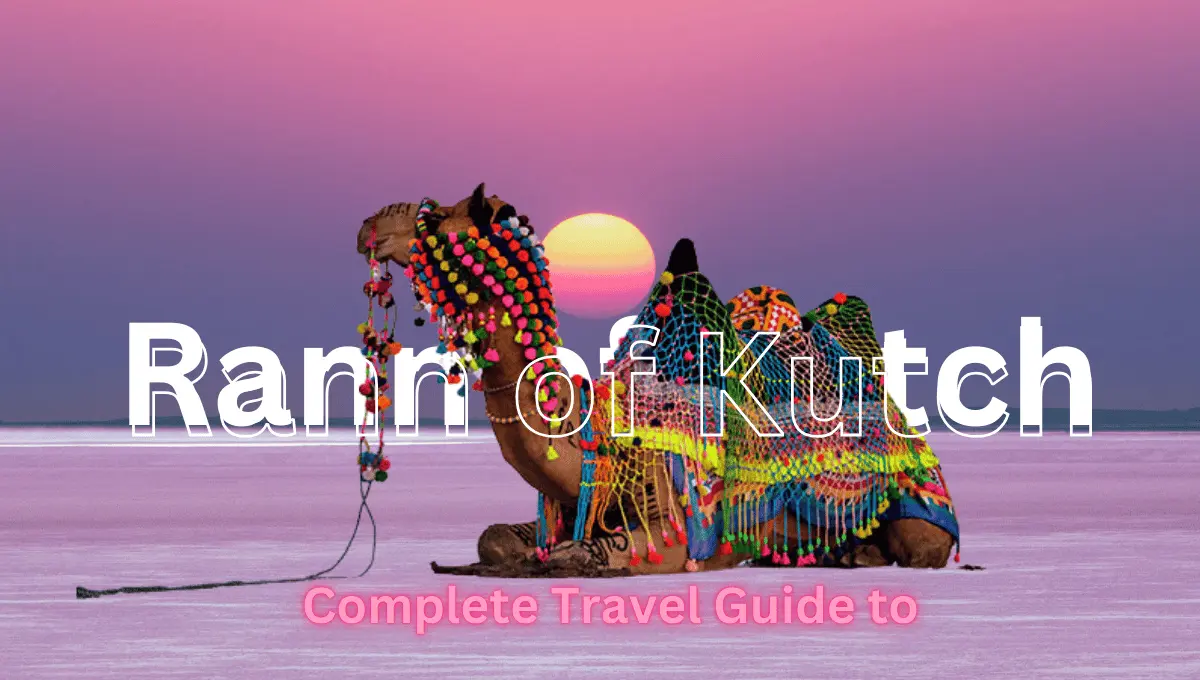
One thought on “A Complete Travel Guide to Gangtok, Sikkim”